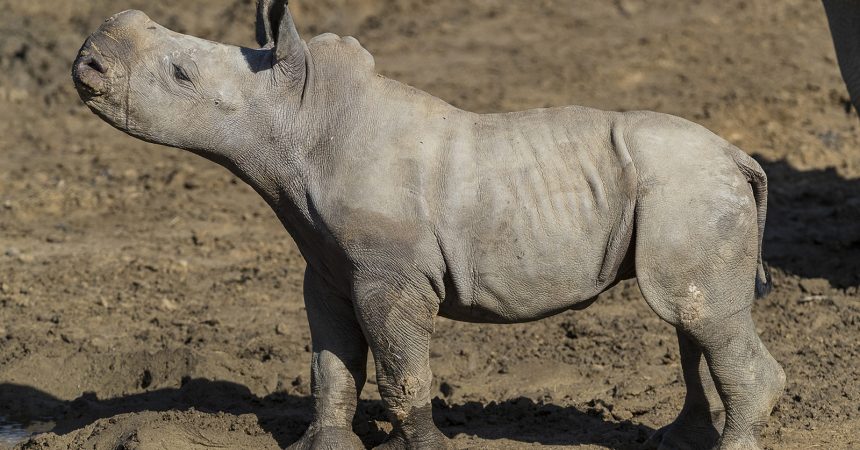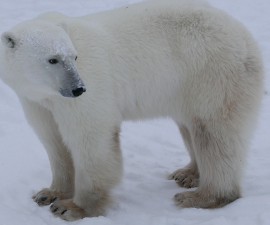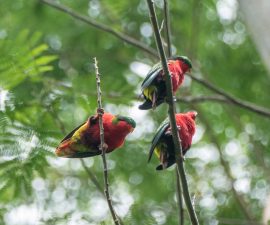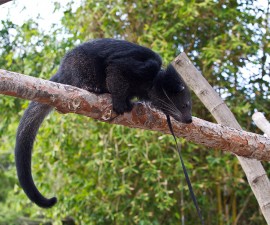San Diego Zoo Global Sets Example of How Cutting-edge Laboratory Science Helps Lead the Fight Against Extinction – Birth of Southern White Rhino Calf at San Diego Zoo Safari Park Related to Change in Rhino Diet
A female southern white rhino calf, born April 30 to first-time mother Kiazi and father Maoto, curiously checked out her surroundings yesterday morning (May 18, 2017) at the San Diego Zoo Safari Park, under the watchful eye of her attentive mother.
Kiazi’s pregnancy was very exciting for researchers at the San Diego Zoo Institute for Conservation Research. She arrived at the Safari Park in 2008 and, despite breeding regularly since her arrival, she had never before conceived. At 16 years old, she is past the average age that most female southern white rhinos have their first calf.
“The birth of Kiazi’s calf gives us a great deal of hope that by feeding low phytoestrogens at our institution and others, we can once again have a healthy, self-sustaining captive southern white rhinoceros population,” said Christopher Tubbs, Ph.D., a senior scientist in Reproductive Sciences at the San Diego Zoo Institute for Conservation Research. “With the high level of poaching currently happening in Africa, having a healthy ex situ population of rhinos is as important as ever. This calf is an example of how we are using cutting-edge laboratory science to lead the fight against extinction.”
Tubbs and his colleagues have been working for nine years to determine why southern white rhino females born in zoos tend not to bear offspring as often as their wild relatives. This problem is not found in other species of rhinos living in zoos. Through extensive research, it was discovered that the animals may be sensitive to compounds called phytoestrogens found in soy and alfalfa, which are a component of the animals’ diets in zoos. During their 16-month gestation, female calves could be exposed to the compounds through their mother’s diet, resulting in infertility issues later in their life.
On the basis of these findings, the nutritional services team at San Diego Zoo Global changed the diet for southern white rhinos in 2014. First, they reduced the amount of pellets rich with soy and alfalfa that are fed to the rhinos. Next, they developed a grass-based pellet for the rhinos that is low in phytoestrogen and supplies nutrients to support reproduction. Approximately two years after the diet changes, two females became pregnant. Since then, there have been three pregnancies in females that had not successfully reproduced before, which resulted in the birth of two healthy calves.
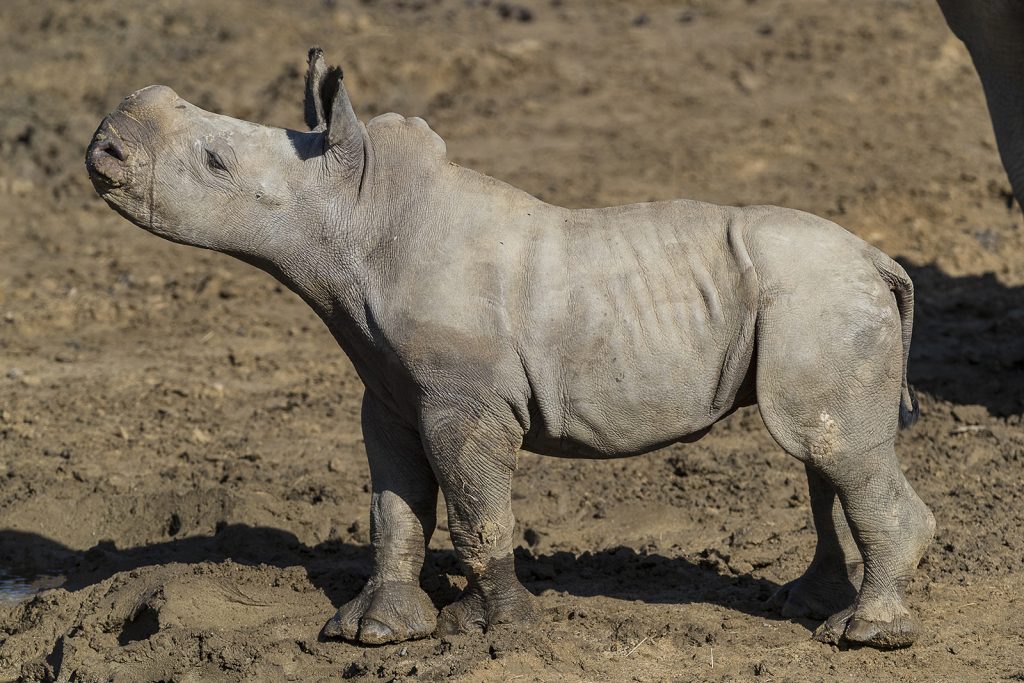
Although Tubbs and his team have only focused on the potential effects of dietary phytoestrogens in white rhinos, it is likely that a number of species living in zoo settings receive diets containing levels of phytoestrogens capable of affecting reproduction. Therefore, future research efforts will focus on identifying species that are possibly affected, evaluating their sensitivity to phytoestrogens and, if warranted, developing new diets and feeding practices aimed at enhancing fertility.
The research project has reached a real point of urgency, due to the increase in poaching in recent years that has dramatically affected rhino populations in the wild. When the project began in 2007, 13 rhinos were poached (that year). In 2016, 1,054 southern white rhinos were poached in South Africa—with an average of three rhinos killed every day. There are five species of rhinos, with three of those species—black, Javan and Sumatran—listed as Critically Endangered on the International Union for Conservation of Nature (IUCN) Red List of Threatened Species. The greater one-horned rhino is listed as Vulnerable and the southern white rhino is listed as Near Threatened.
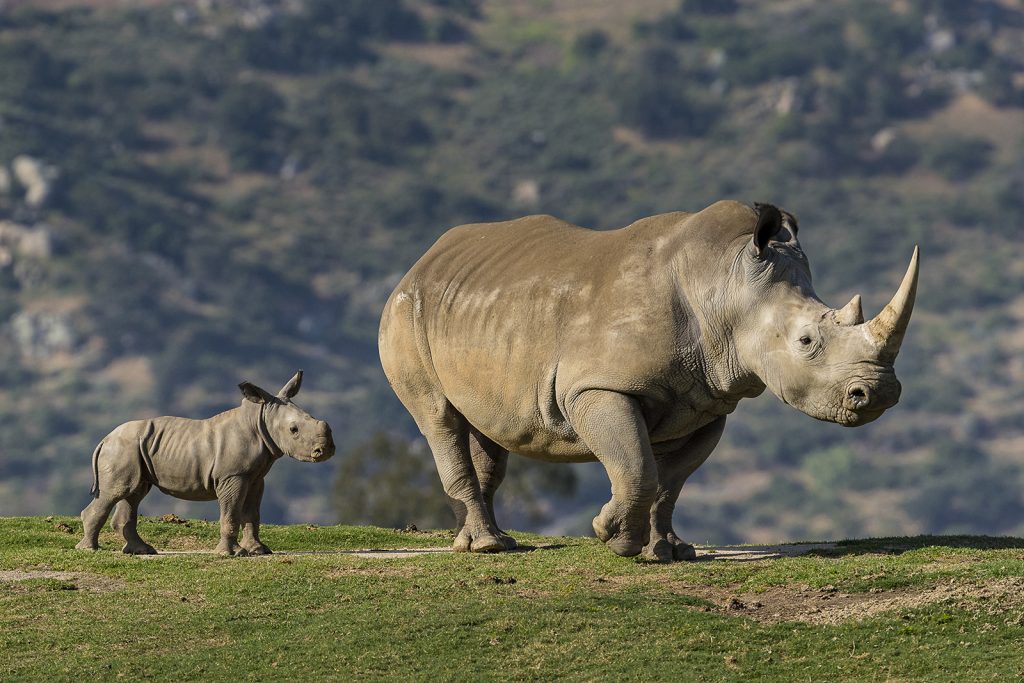
Kiazi’s calf is the 96th southern white rhino calf born at the San Diego Zoo Safari Park since 1972. Estimated to weigh around 125 pounds at birth, the calf will nurse from her mother for up to 14 months—and she is expected to gain about 100 pounds a month in her first year. When full grown, at around 3 years of age, she could weigh 4,000 to 5,000 pounds. The rhino calf and her mom can best be seen roaming their habitat from the Park’s Africa Tram Safari or a Caravan Safari.

